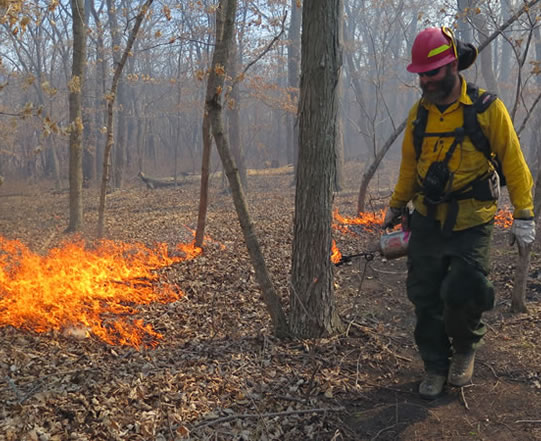Northern Research Station
 Welcome to our annual presentation of Northern Research Station highlights from fiscal year 2020! While 2020 was a year filled with change, I am very proud to share with you what hasn’t changed – our mission to provide you with the best available science on forestry and natural resources management. I am Lon Yeary, Acting Director of the USDA Forest Service Northern Research Station and the Forest Products Lab, and I am delighted to share this presentation showcasing our notable scientific achievements from 2020.
Welcome to our annual presentation of Northern Research Station highlights from fiscal year 2020! While 2020 was a year filled with change, I am very proud to share with you what hasn’t changed – our mission to provide you with the best available science on forestry and natural resources management. I am Lon Yeary, Acting Director of the USDA Forest Service Northern Research Station and the Forest Products Lab, and I am delighted to share this presentation showcasing our notable scientific achievements from 2020.
Northern Research Station scientists work collaboratively with partners from diverse regions and institutions as well as landowners to co-produce research that is practical, useful, and ultimately improves the health and productivity of our Nation’s forests and associated natural resources. The Northern Research Station continues to deliver timely scientific knowledge and tools that land managers can use to manage natural resources during a time of unprecedented changing conditions.
Our Research Highlights presentation offers a wonderful snapshot of what the Northern Research Station does. If you enjoyed the audio portion of our highlights, be sure to listen to our new podcast ‘Forestcast.’ If you want to learn more about our research, I invite you to follow us on Twitter at @usfs_nrs and visit our website at www.nrs.fs.fed.us. Better yet, give me a call! I’d love to hear about what matters most to you and explore opportunities to work together: 608-231-9320.
Northern Research Station Locations
NRS at a Glance
| Research Work Units: | 13 |
|---|---|
| Research Locations: | 22 |
| Experimental Forests: | 22 |
| Research Scientists: | 111 |
| Employees: | 325 |
| NRS Territory | |
| National Forests |
 Director's Choice Highlights
Director's Choice Highlights
The following five highlights were selected as the "Director's Choice" for 2020.
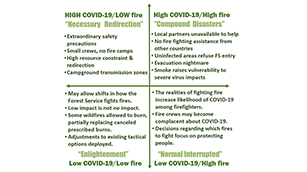
 Scenarios for Compound Disasters: COVID-19 and Wildfire Management
Scenarios for Compound Disasters: COVID-19 and Wildfire Management
Contending with two simultaneous and interacting disasters—wildfire and the COVID-19 pandemic—poses an extraordinary challenge for wildland fire management. All aspects of fire management would be significantly more complex. For this study scientists rapidly developed scenarios to inform wildfire decision making in the face of COVID-19.

 Potential to Increase Carbon Sequestration with Tree Planting
Potential to Increase Carbon Sequestration with Tree Planting
Almost one-third of Earth’s total land area is comprised of forest, which is also the largest terrestrial carbon sink. A Northern Research Station scientist and his partners have established that fully stocking the Nation’s understocked forests could increase carbon sequestration by about 20 percent.

 Is the Little Brown Bat's Immune System Adapting to White-nose Syndrome?
Is the Little Brown Bat's Immune System Adapting to White-nose Syndrome?
A small number of little brown bat populations have persisted in the eastern United States after a decade of exposure to the fungal pathogen responsible for the white-nose syndrome. Could these surviving populations be developing an effective adaptive immune response to the disease?

 Scientists Join Forces to Save Ash Trees Facing Intercontinental Threats
Scientists Join Forces to Save Ash Trees Facing Intercontinental Threats
Ash trees across Europe are currently under attack by a fungal disease known as ash dieback disease while in the United States the emerald ash borer is killing ash trees at an unprecedented rate. An international team of scientists have worked for several years to find genes that are responsible for pest and pathogen resistance in trees.

 Warming Peatlands Emit Carbon Faster than Previously Known
Warming Peatlands Emit Carbon Faster than Previously Known
Peatlands occupy just 3 percent of the planet but store about 30 percent of the soil carbon in terrestrial landscapes. A team of scientists is exploring whether climate change could transform peatlands from a carbon sink to a carbon source and, if so, how quickly.
2020 Research Highlights
The Northern Research Station's science is complex, but the need for the research is simple. Land managers, city planners, and policy-makers need sound science on all aspects of the natural world and its complex connections with people to achieve decisions resulting in a healthy and sustainable future for present and future generations of Americans. The following highlight some of our best research supporting these goals over the last year.

Space-Based Fire Effects Mapping
Scientists are building capacity to do space-based fire effects mapping and post-fire monitoring as a means of strengthening ongoing national programs. A key part of that effort is figuring out how to predict fire effects from remotely-sensed information. Results of a recent study demonstrate one approach.

Do Invasive Forest Pest Ranges Shift from their Native Environments?
Invasive species experience biotic and abiotic conditions that may not resemble their native environments. Scientists compared native and invasive niches of four forest pests to help predict a species’ potential range expansion and invasion potential and help guide monitoring efforts.

Spatially Targeted Drone Carries Biocontrol Weevil to Hard-to-Reach Patches of Mile-a-Minute Weed
Inadvertently introduced in the northeastern United States in the 1930s, mile-a-minute weed is a highly aggressive invasive plant that is replacing native species in many areas of the Nation. While a biocontrol agent has been identified, finding and reaching dense patches of mile-a-minute weeds has been a problem for land managers. The solution may be drones carrying environmentally friendly pods packed with tiny weevils.

Long-term Monitoring Reveals Bird Population Dynamics in the South
The USDA Forest Service monitors birds because of interest in bird conservation, and many birds are important management indicator species or are threatened, endangered, or sensitive species. Scientists analyzed 26 years of bird monitoring data from southern national forests to determine the status of birds on these forests to help guide land management planning.

Collaboration with Canadian Researchers Key to Shared Stewardship of Iconic Tree Species
Tree inventory data typically are confined to national boundaries and differ in formats and objectives, thus limiting their use for studying species wide ranges. Northern Research Station scientists collaborated with their colleagues in Canada to overcome this barrier to predict current and future habitat quality and calculate colonization likelihoods. Scientists mapped combinations of habitat quality and colonization likelihoods to evaluate management options, including assisted migration.

First Textbook on Ecological Silviculture Serves as Blueprint for the Next Generation of Forestry
Ecological silviculture is an approach for managing forests based on emulation of natural forest dynamics to sustain the myriad of services forests provide. For the first time, scientists have distilled the concepts of ecological silviculture into a comprehensive guide, the first truly new textbook on silviculture offered to the global management community in the last 50 years.

Philadelphia Study Links Tree Canopy Growth to Decrease in Human Mortality
Cities are investing in programs to expand tree cover and the myriad of benefits trees provide, such as cleaner and cooler air. In the first citywide health impact assessment of the estimated effects of a tree canopy initiative on premature mortality, a Northern Research Station scientist and her partners found that tree cover in Philadelphia could also reduce premature deaths.

A Tree Species’ Evolutionary History Predicts Impact of Invasive Pests
Research by Northern Research Station scientists and their partners presents the first evidence supporting a long-held hypothesis that a tree’s evolutionary history is key to its susceptibility to nonnative herbivorous insects. This discovery has the potential to be a game-changer in predicting the impact of and managing nonnative insects.
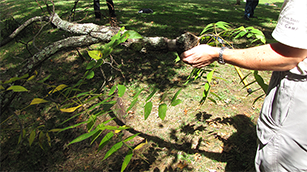
Matching Causes with Symptoms: Research Improves Diagnosis of Declining Eastern Black Walnut
Visual diagnosis of thousand cankers disease (TCD) in a declining black walnut is difficult in the Eastern United States because the general dieback symptoms are typical of several different disease and insect problems. Work by a Northern Research Station scientist and her partners will aid plant health specialists and laboratory diagnosticians in determining causal agents of branch dieback in this valuable hardwood species

New Guidelines Help Cities Manage the Slow-Moving Wildfire that is the Emerald Ash Borer Invasion
Emerald ash borer (EAB) is like a slow-moving wildfire spreading through urban forests and killing ash trees. City foresters need guidelines that can slow the insect’s spread and preserve a community’s investment in urban forestry. Northern Research Station scientists delivered practical guidelines that emphasize the importance of surveillance for EAB.
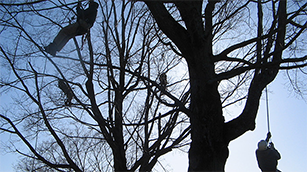
New Adaptive Tools Enhance Shared Stewardship in Battling Asian Longhorned Beetle
Researchers and managers with the USDA Forest Service and Animal & Plant Health Inspection Service (APHIS) are developing new tools that share the activities and results of the cooperative Asian longhorned beetle (ALB) eradication programs, contributing to a more efficient response and speedier eradication of a potentially devastating nonnative invasive species.

Forest Products Manufacturers are Entering the Fourth Industrial Revolution – Are They Ready?
Industry 4.0, known for the digitization of manufacturing, enhanced automation, smart factories, and data-driven production systems, promises to bring rapid change to the forest products industry. Are woodworking manufacturers in the United States ready?
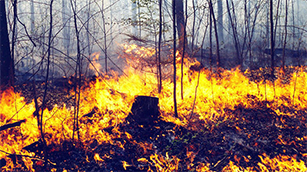
Fire Returns to the Allegheny National Forest, and Oak and Black Cherry Thrive
After a century of absence from the Allegheny Plateau of northwestern Pennsylvania, prescribed fire has been reintroduced as a means of perpetuating the mixed-oak forests of the Allegheny National Forest.

Cracking the Case of the Beech Leaf Disease Mystery
Mysterious symptoms, referred to as beech leaf disease (BLD), have caused decline and mortality of American beech in Ohio since first observed in Lake County, OH, in 2012. By 2019 the disease spread to 13 other counties in Ohio, four other states, and Canada. A consortium of scientists from federal, state, and local government agencies in the United States and Canada, including the Northern Research Station (NRS), worked together to solve this mystery.

Listeners Journey into the Woods with Scientists via Forestcast
From bright green insects that hitchhiked to the United States in packing material to a tiny insect that literally sucks the life out of hemlock trees, insects, even catastrophically damaging ones, are fascinating. A new podcast brings captivating stories about USDA Forest Service science to a whole new audience via an intimate, and popular, new medium.



